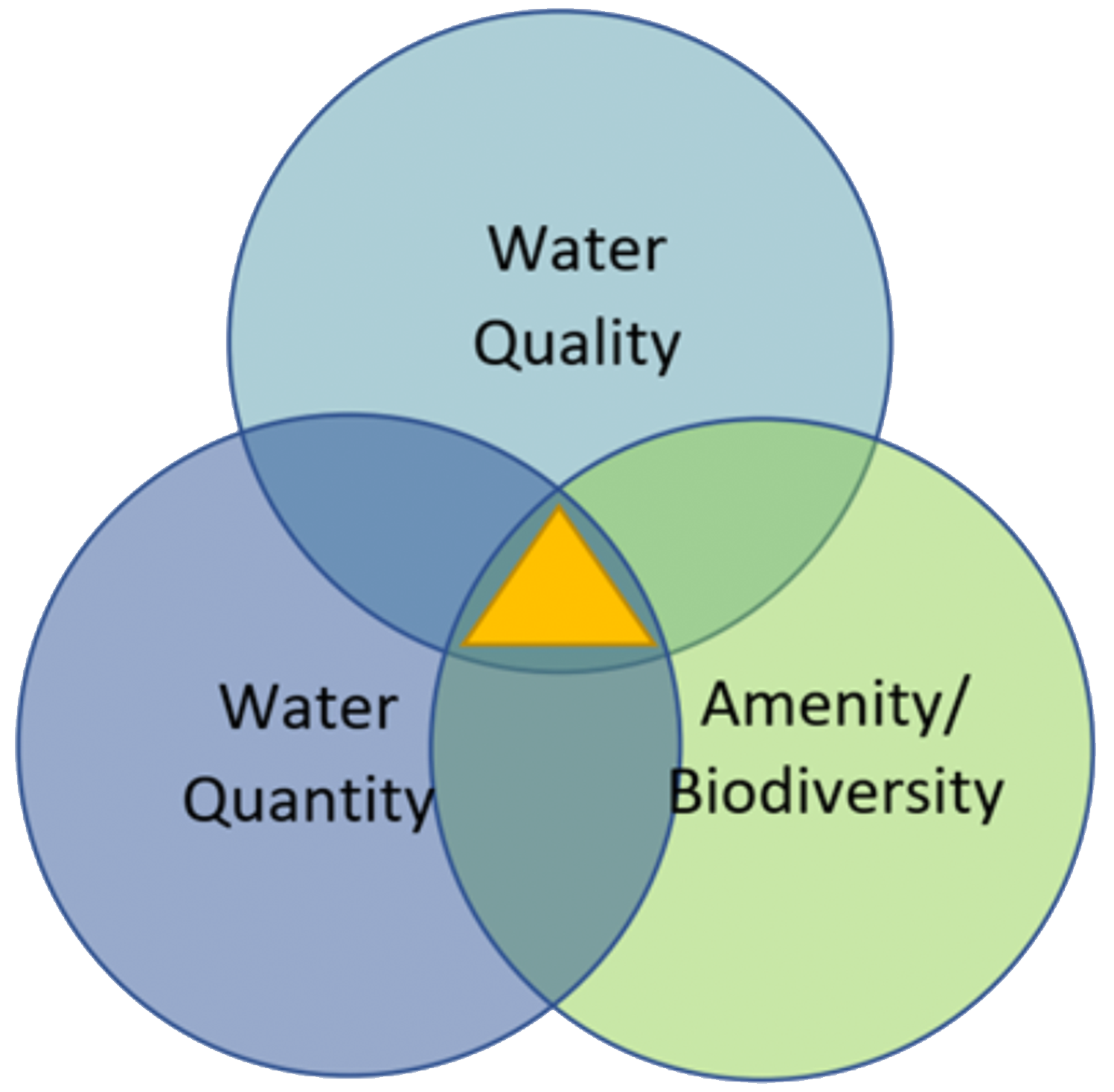Sustainable Drainage Systems (SuDS)
Bristol, South UK
What is SuDS?
For years, surface water and foul water have been dealt with by the same network of pipes across the UK. This includes surface water runoff. In storm conditions, this combined system gets overwhelmed causing flooding and pollution of rivers, among other problems.
SuDS mimic natural regimes which means they protect against accelerated runoff and also protect against pollution arising from the urban environment and from sewage treatment plants having to discharge to rivers. With changing climate leading to higher and more severe rainfall events this is becoming ever more critical. Based in Bristol, we offer professional SuDS design guidance and calculations for clients across the South of the UK.
Sustainable drainage systems are not just pervious paving! Rather a SuDS design can comprise a range of systems that may include source control, soakaways, swales, wetlands, retention in tanks or basins, flow control etc. The method or methods used will be dependent on the site characteristics.

The SuDS Triangle
Infiltration Testing
We carry out infiltration testing on a range of sites across the South and elsewhere in the UK and frequently combine it with other site investigation activities. Infiltration testing should follow the methodology outlined in BRE365 and consequently can use high volumes of water. It is also important to consider the underlying geology of the site: where impermeable clays are present, soakaways are unlikely to work due to lack of permeability. Equally, where a high water table is present (within 1 metre of the soakaway base) a soakaway is not a practical solution to surface water drainage and other SuDS design methods may have to be considered.
SuDS Design Guidance
There are many solutions to managing surface water drainage on sites across the UK, and it can be challenging to overcome constraints that are present, especially on small sites, those with very low permeability soils, high water tables etc. In these cases a more complex engineering solutions may be required and we work with partners who can provide the necessary SuDS design calculations, guidance, and recommendations.

